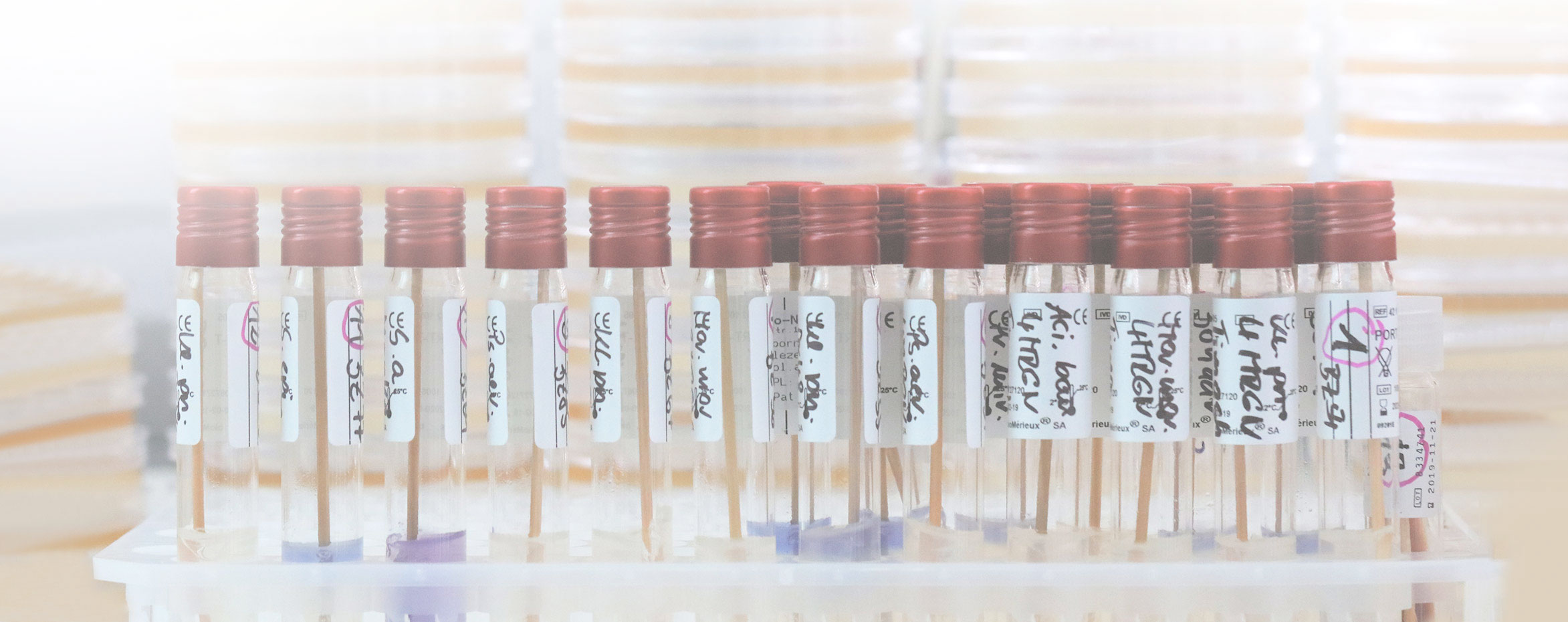Leibniz Institute DSMZ GmbH
Biological characterization and selection of phages suitable for therapy
In order for a patient who is colonized/infected with a multi-resistant bacterium (e.g. Staphylococcus aureus in the form of MRSA or 3/4MRGN Pseudomonas aeruginosa) to be treated with bacteriophages (phages for short), suitable lytic phages must first be identified and provided. A well-suited phage is characterized by the fact that it can destroy as many bacterial variants (“strains”, “isolates”) of a species as possible and is classified as harmless. For this purpose, phages from the collection of the Leibniz Institute DSMZ GmbH are tested on a diverse collection of patient isolates. In addition, these phages must be genetically tested in order to exclude the possibility that they carry virulence factors or antibiotic resistance markers. Promising candidates are subsequently investigated in vitro (in the laboratory) for their efficiency in destroying bacteria. At the same time, the search for further new phages in different environmental samples is carried out in order to enlarge the repertoire. This is followed by clonal isolation/clonal purification of the phages, reproduction on a small scale and also examination of their suitability for application purposes. Since each phage within a bacterial species can only destroy certain patient isolates, it is necessary to find different phages which together cover as many bacterial isolates as possible. For each bacterial species prioritized in the PhagoFlow project, a set of phages with high genetic and morphological diversity is to be compiled, thus increasing the probability of sufficient coverage of patient isolates.
In the course of the PhagoFlow project, the procedure of a phagogram for the clinical laboratory routine to test the sensitivity of patient isolates to phages is to be developed in good time. For this purpose, it is necessary to compare different methods with each other in terms of feasibility, evaluability and reproducibility. The goal is a simple implementation and harmonization of the incubation conditions, so that this procedure can be well integrated into the everyday routine of diagnostics.
First, efficient new phages are sought for three bacterial species from the ESKAPE group: 1.) Staphylococcus aureus (very frequently detected as an infectious agent in Bundeswehr hospital) is a spherical gram-positive bacterium, a normal inhabitant of the skin and the nasopharynx. However, strains of this type of bacteria are often capable of producing various toxins, and the bacterium is also known as a pyogenic agent in inflammatory processes. If the bacterium enters the bloodstream, serious consequences can occur; it is one of the most frequently known pathogens of bacteremia and sepsis, but also settles on organs such as heart valves and foreign surfaces such as artificial heart valves or joint replacement. In S. aureus, the MRSA variants, methicillin-resistant strains, are particularly feared, the proverbial “hospital germ” whose antibiotic treatment is difficult. 2.) Pseudomonas aeruginosa is also a very common infectious agent found in Bundeswehr hospital, a gram-negative rod bacterium that occurs virtually everywhere in the environment and in and on us, has an extremely flexible genome and is very adaptable to genetic make-up due to this flexibility. P. aeruginosa occurs particularly typically in biofilms, microbial communities in which the bacteria “rest”, but maintain intensive exchange of genes and information (see also “Quorum sensing”), ready to exchange virulence factors and antibiotic resistances for mutual selection advantage. The mentioned undesirable properties of S. aureus are almost entirely true for P. aeruginosa, although P. aeruginosa is more common in various infections. In this bacterial species, not only multi- but even pan-resistant strains are now known in which not a single antibiotic suitable for therapy is effective. 3.) In Bundeswehr hospital, the gram-negative rod Escherichia coli, a typical intestinal inhabitant, is diagnosed with moderate frequency. Within its species, Escherichia coli has an enormous range of variants, from the status of an important microbial inhabitant to the life-threatening pathotype EHEC, with strains that neither form toxins nor carry virulence factors up to extremely dangerous toxin formers with sophisticated infection mechanisms and antibiotic multiresistances. The importance of fine diagnostics in the case of E. coli in patients is therefore particularly clear. These three bacterial species also have in common that they multiply very rapidly. They also occur in mixed infections. In the further course of the project, other bacterial species may come to the fore, depending on requirements and possibilities.


